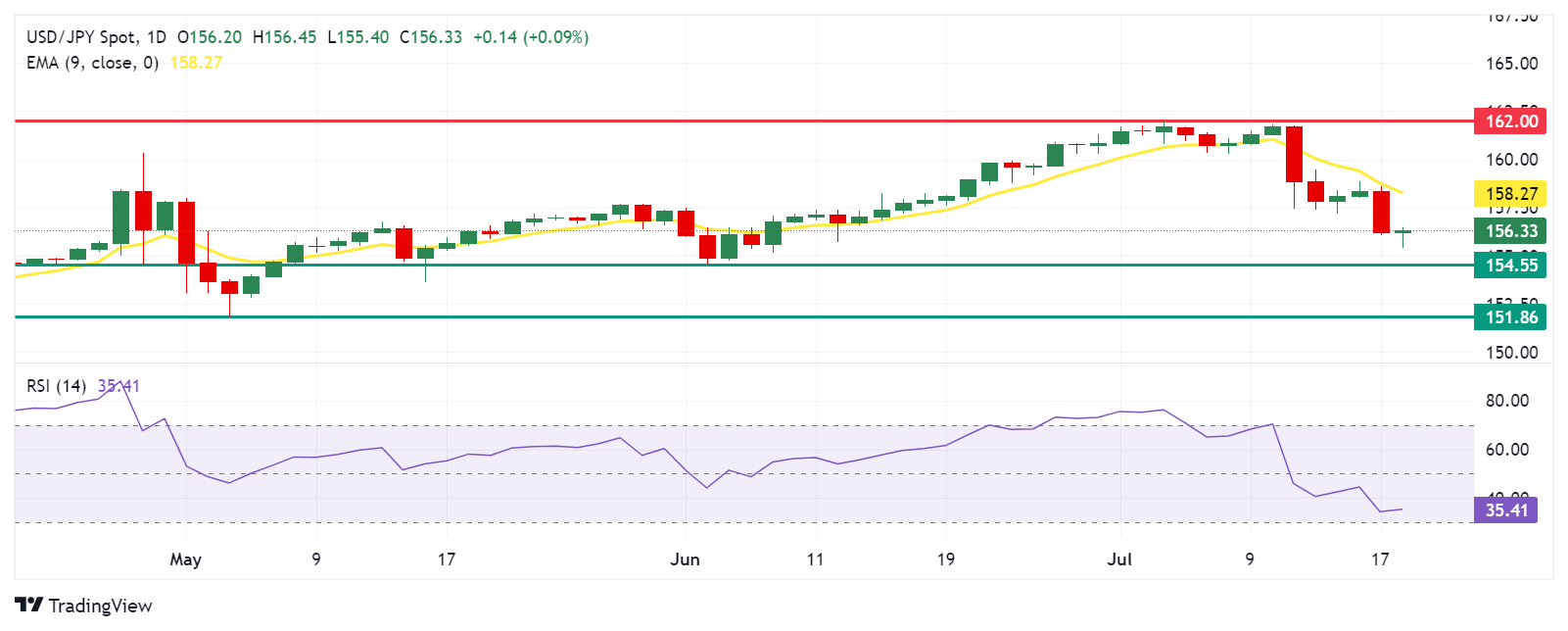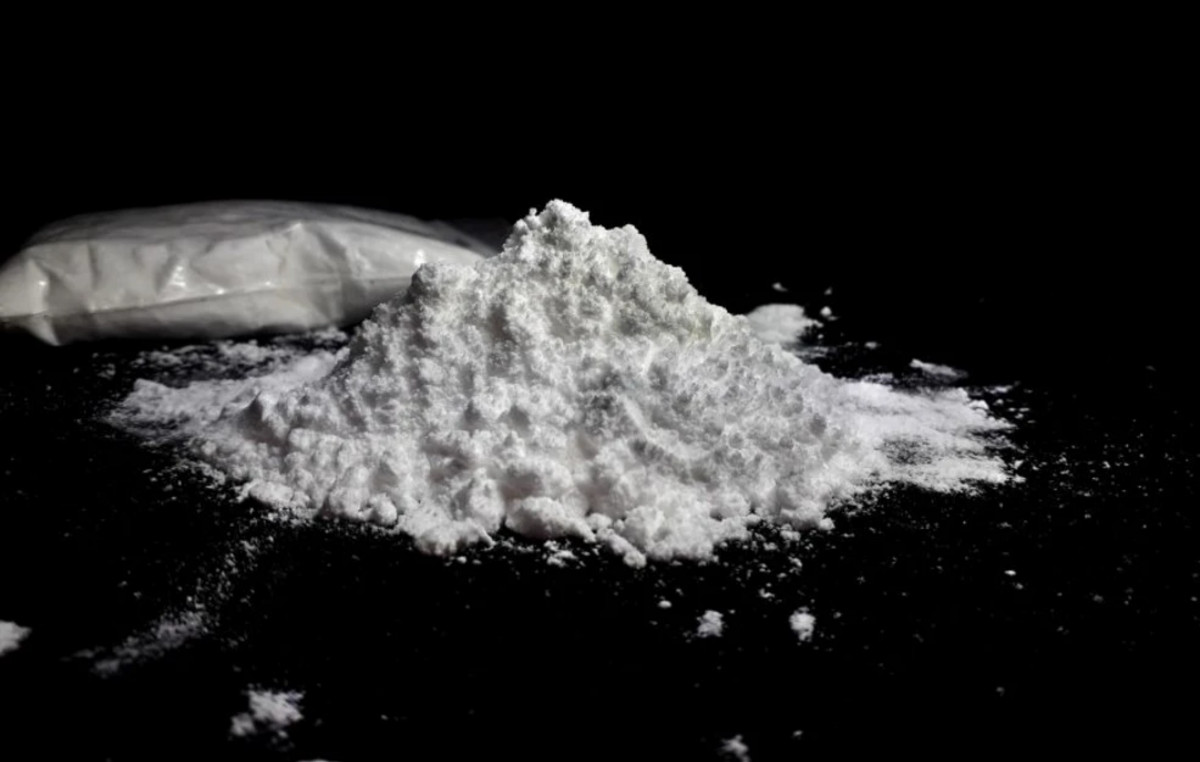- The Japanese Yen is down slightly while the US Dollar is recovering.
- The JPY could limit its decline as traders expect further interventions from Japanese authorities.
- The dollar could limit its rise due to growing expectations that the Fed will cut rates in September.
The Japanese Yen (JPY) is retracing recent gains on Thursday. However, the JPY had strengthened against the US Dollar (USD) after an alleged intervention by Japanese authorities pushed the USD/JPY pair to a one-month low of 155.36. Traders remain on the lookout for the possibility of further interventions.
Reuters cited Kyodo News as reporting that Japan’s top currency diplomat Masato Kanda said on Wednesday that he would have to respond if speculators caused “excessive” moves in the foreign exchange market and that there was no limit to how often authorities could intervene.
The US Dollar is supported by a slight improvement in US Treasury yields. However, the Dollar could limit its upside due to the high probability of a rate cut decision by the Federal Reserve (Fed) at its September policy meeting.
Fed Governor Christopher Waller said on Wednesday that the U.S. central bank is “getting close” to an interest rate cut. Meanwhile, Richmond Fed President Thomas Barkin said the decline in inflation had begun to broaden and he would like to see it continue, according to Reuters.
According to the CME Group’s FedWatch tool, markets now indicate a 93.5% probability of a 25-basis-point rate cut at the Fed’s September meeting, up from 69.7% a week ago.
Daily Market Movers Roundup: Japanese Yen eases slightly as US Dollar recovers
- Japan’s overall merchandise trade balance for the year ended June rose to a surplus of ¥224 billion from an expected deficit of ¥240 billion and ¥-1,220.1 billion previously.
- Japan’s year-on-year exports in June grew 5.4%, below the 6.4% forecast and a sharper decline from the 13.5% increase in the previous period. Meanwhile, import growth collapsed to 3.2%, well below the 9.3% forecast compared with 9.5% previously.
- During an interview with Bloomberg News on Tuesday, Donald Trump warned Fed Chair Jerome Powell against cutting U.S. interest rates ahead of the November presidential election. However, Trump also indicated that if re-elected, he would allow Powell to complete his term if he continued to “do the right thing” at the Fed.
- Data released on Tuesday showed that the Bank of Japan (BoJ) intervened in the foreign exchange market on consecutive days last Thursday and Friday. The BoJ’s current account balance data, released on Tuesday, indicates an expected liquidity outflow of about ¥2.74 trillion ($17.3 billion) from the financial system on Wednesday due to various government sector transactions, according to Nikkei Asia.
- On Tuesday, Federal Reserve Board of Governors member Dr. Adriana Kugler acknowledged that inflation pressures have eased, but stressed that the Fed still needs additional data to justify a rate cut. Kugler indicated that if upcoming data do not confirm that inflation is moving toward the 2% target, it may be appropriate to keep current rates in place for a while longer, according to Reuters.
- U.S. retail sales for June were largely in line with expectations. U.S. retail sales were stable at $704.3 billion in June, after an increase of 0.3% (revised from 0.1%) in May, and are in line with market expectations.
- Fed Chair Jerome Powell said Monday that the three U.S. inflation readings this year “increase some confidence” that inflation is on track to sustainably meet the Fed’s target, suggesting a shift toward interest rate cuts may not be far off.
Technical Analysis: USD/JPY holds above 156.00
USD/JPY is trading around 156.30 on Thursday. The daily chart analysis shows that the pair is trading below its 9-day exponential moving average (EMA), suggesting a bearish momentum in the short term. This indicates that it might be prudent to wait before buying until the trend shows signs of reversal. Moreover, the momentum indicator, the 14-day Relative Strength Index (RSI), is below the 50 level, suggesting a confirmation of a bearish bias.
The USD/JPY pair could find key support around the June low at 154.55. A break below this level could put pressure on the pair to navigate the region around the May low at 151.86.
On the upside, immediate resistance is seen around the nine-day exponential moving average (EMA) at 158.27. A break above this level could lead the USD/JPY pair to revisit the retracement resistance around the psychological level of 162.00.
USD/JPY: Daily Chart
Japanese Yen PRICE Today
The table below shows the Japanese Yen (JPY) exchange rate against major currencies today. The Japanese Yen was the weakest currency against the Australian Dollar.
| USD | EUR | GBP | JPY | CAD | AUD | NZD | CHF | |
|---|---|---|---|---|---|---|---|---|
| USD | 0.04% | 0.04% | 0.11% | -0.02% | -0.10% | 0.08% | 0.11% | |
| EUR | -0.04% | 0.00% | 0.05% | -0.05% | -0.15% | 0.04% | 0.07% | |
| GBP | -0.04% | -0.00% | 0.06% | -0.07% | -0.15% | 0.05% | 0.08% | |
| JPY | -0.11% | -0.05% | -0.06% | -0.13% | -0.21% | -0.05% | 0.02% | |
| CAD | 0.02% | 0.05% | 0.07% | 0.13% | -0.09% | 0.10% | 0.13% | |
| AUD | 0.10% | 0.15% | 0.15% | 0.21% | 0.09% | 0.19% | 0.25% | |
| NZD | -0.08% | -0.04% | -0.05% | 0.05% | -0.10% | -0.19% | 0.03% | |
| CHF | -0.11% | -0.07% | -0.08% | -0.02% | -0.13% | -0.25% | -0.03% |
The heatmap shows percentage changes of major currencies. The base currency is selected from the left column, while the quote currency is selected from the top row. For example, if you choose the Japanese Yen from the left column and move along the horizontal line to the US Dollar, the percentage change shown in the chart will represent the JPY (base)/USD (quote).
Japanese Yen FAQs
The Japanese Yen (JPY) is one of the most traded currencies in the world. Its value is determined broadly by the performance of the Japanese economy, but more specifically by the policy of the Bank of Japan, the spread between Japanese and US bond yields, and risk sentiment among traders, among other factors.
One of the Bank of Japan’s mandates is currency control, so its moves are key to the Yen. The BoJ has intervened directly in currency markets on occasion, usually to lower the value of the Yen, although it often refrains from doing so due to political concerns of its major trading partners. The BoJ’s current ultra-loose monetary policy, based on massive stimulus to the economy, has caused the Yen to depreciate against its major currency peers. This process has been exacerbated more recently by a growing policy divergence between the BoJ and other major central banks, which have opted to sharply raise interest rates to combat decades-old levels of inflation.
The Bank of Japan’s stance of maintaining an ultra-loose monetary policy has led to an increase in policy divergence with other central banks, in particular with the US Federal Reserve. This favours the widening of the spread between US and Japanese 10-year bonds, which favours the Dollar against the Yen.
The Japanese Yen is often considered a safe haven investment. This means that in times of market stress, investors are more likely to put their money into the Japanese currency due to its perceived reliability and stability. In turbulent times, the Yen is likely to appreciate against other currencies that are considered riskier to invest in.
Source: Fx Street
I am Joshua Winder, a senior-level journalist and editor at World Stock Market. I specialize in covering news related to the stock market and economic trends. With more than 8 years of experience in this field, I have become an expert in financial reporting.








